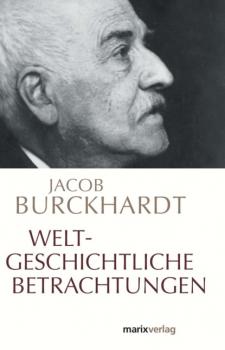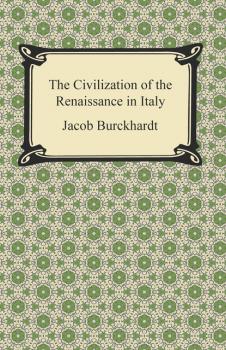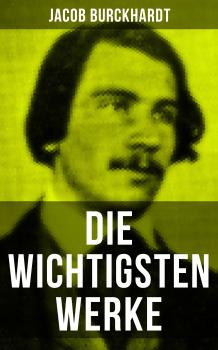ТОП просматриваемых книг сайта:















Jacob Burckhardt
Список книг автора Jacob BurckhardtАннотация
In der vorliegenden Darstellung der Zeiten vom Auftreten des Kaisers Diocletian bis zum Ausgang Constantins des Grossen könnte jeder Abschnitt seiner eigenen Einleitung bedürfen, weil die Dinge nicht nach der Zeitfolge und der Regierungsgeschichte, sondern nach den vorherrschenden Richtungen des Lebens geschildert werden sollen. Wenn dieses Buch aber gleichwohl einer allgemeinen Einleitung bedarf, so wird dieselbe am ehesten die Geschichte der höchsten Staatsgewalt des sinkenden Römerreiches im dritten Jahrhundert nach Christo enthalten müssen. Nicht dass aus ihr sich alle übrigen Zustände entwickeln liessen, aber sie gibt immerhin den Boden für die Beurteilung einer Menge äusserer wie geistiger Ereignisse der Folgezeit. Alle Formen und Grade, welche die Gewaltherrschaft erreichen kann, von den schrecklichsten bis zu den günstigsten, sind hier in einer merkwürdig abwechselnden Reihe durchlebt worden.
Аннотация
Renowned for his Civilization of the Renaissance in Italy and Reflections on History, Jacob Burckhardt (1818–1897) has well been described as “the most civilized historian of the nineteenth century.” JuEAments on History and Historians consists of records collected by Emil Dürr from Burckhardt’s lecture notes for history courses at the University of Basel from 1865 to 1885. The 149 brief sections span five eras: Antiquity, the Middle Ages, History from 1450 to 1598, the History of the Seventeenth and Eighteenth Centuries, and the Age of Revolution.
Аннотация
Der Schlüssel zum Verständnis von Burckhardts Werk liegt vor allem in seinen «Weltgeschichtlichen Betrachtungen», einer Vorlesungsreihe, die er unter dem Titel «Über das Studium der Geschichte» gehalten hat, und die dreißig Jahre später von seinem Neffen Oeri unter dem neuen Titel herausgegeben wurden. Sie stellen einen Versuch dar, die Aporien des Historismus durch ein typologisches System historischer Konstanten zu überwinden und ein universalgeschichtlich begründetes Urteil über die eigene Zeit zu gewinnen. Und dies unternimmt er nicht als Kulturhistoriker, sondern als Geschichtsphilosoph und Universalhistoriker.
Аннотация
Burckhardts Werk gehört auch heute noch zu den absoluten Klassikern der Kulturgeschichte und ist ein unerschöpfliches Referenzwerk. Dies ist Band 3 mit folgendem Inhalt:
Inhalt: Sechster Abschnitt. Die Bildende Kunst I. Das Erwachen der Kunst II. Die Kunstgattungen III. Die Philosophen und Politiker und die Kunst Siebenter Abschnitt. Poesie und Musik I. Die Urzeit II. Die hexametrische Poesie III. Die Musik IV. Die Poesie ausserhalb des blossen Hexameters Achter Abschnitt. Zur Philosophie, Wissenschaft und Redekunst I. Fördernisse und Hemmung II. Der Bruch mit dem Mythus III. Die Redekunst IV. Die freie Persönlichkeit V. Die wissenschaftliche Forschung VI. Geschichte und Völkerkunde
Inhalt: Sechster Abschnitt. Die Bildende Kunst I. Das Erwachen der Kunst II. Die Kunstgattungen III. Die Philosophen und Politiker und die Kunst Siebenter Abschnitt. Poesie und Musik I. Die Urzeit II. Die hexametrische Poesie III. Die Musik IV. Die Poesie ausserhalb des blossen Hexameters Achter Abschnitt. Zur Philosophie, Wissenschaft und Redekunst I. Fördernisse und Hemmung II. Der Bruch mit dem Mythus III. Die Redekunst IV. Die freie Persönlichkeit V. Die wissenschaftliche Forschung VI. Geschichte und Völkerkunde
Аннотация
Jacob Burckhardt was a European historian and critic of the nineteenth century who is commonly referred to as the world's first cultural historian. He believed that historical writings should describe the spirit, forms of expression, people, and setting of a particular era. He viewed the Italian Renaissance as the world's finest period of culture and chose it as the subject of his most well-known work, «The Civilization of the Renaissance in Italy.» At the time of its publication it was the most influential interpretation of the Italian Renaissance ever written due to its expansive look into the opulent culture and artistic movements which were created during that time. In the work, Burckhardt seeks to compare the Renaissance with other important eras in order to show how the Italians rose above those cultures. The text, however, is not so much «scientific» as it is opinionated, which has earned it a reputation for being wholly biased. Still, Burckhardt is able to weave together a masterful narrative which creates a holistic story for the Renaissance and its influence on Western Civilization.
Аннотация
This authoritative study by a distinguished scholar presents a brilliant panorama of Italian Renaissance life, explaining how and why the period constituted a cultural revolution. Author Jacob Burckhardt chronicles the transition from the medieval concept of society as a conglomeration of classes and communities to the Renaissance focus on individual spirit and creativity. Burckhardt's comprehensive view of art, government, and aspects of daily life redefined both the Western world's understanding of the Italian Renaissance and future studies of cultural history. Historian Hajo Holborn praised this survey as «the greatest single book on the history of Italy between 1350 and 1550.» First published in German in 1860, its exploration of art, fashions, manners, and philosophy traces the influences of classical antiquity on Michelangelo, Leonardo, the Medicis, and other thinkers and artists. As alive today as when it was written 150 years ago, this indispensable study chronicles the revival of humanism, the conflict between church and empire, and the rise of both the modern state and the modern individual.










